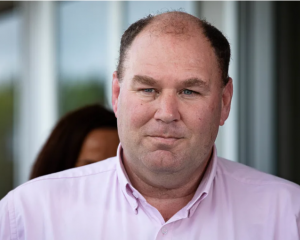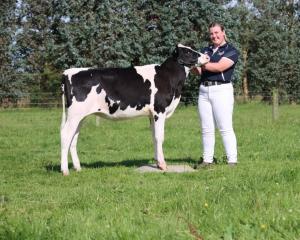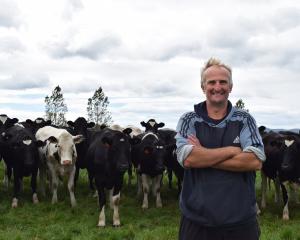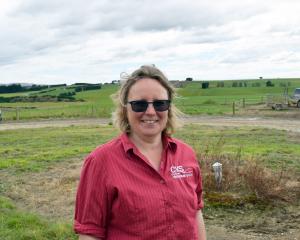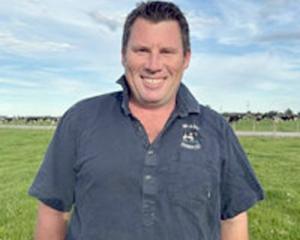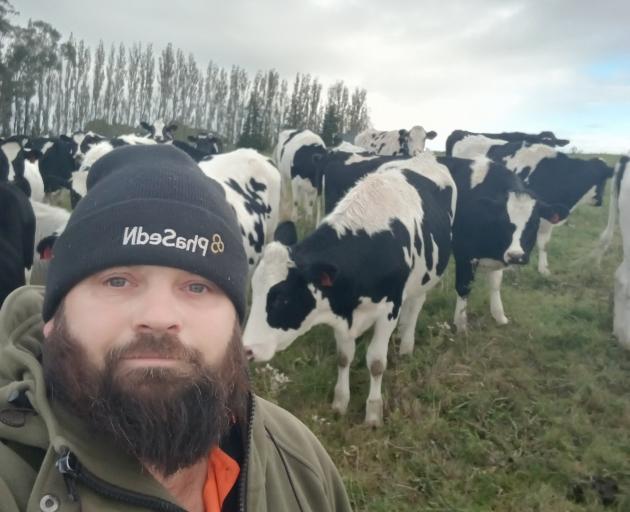
At a ceremony in Oamaru on Sunday, the Ray Family in Clydevale were announced the winners of the in-calf heifers section and Kemra Farm on Inch Clutha the winner of the calves section.
Kemra Farm co-owner Brendan Morrison said his family’s farm was the back-to-back winner of the calves section.
"It was a surprise."
The season had been challenging, he said.
Milk production was on track for a record until 200mm of rain fell in 48 hours in early October last year.
"It was as the cows were peaking and they didn’t peak any higher and we lost a lot of production."
Milk production from the herd of 400 Holstein Friesian cows was back on last season.
About 205,000kg of milksolids was produced last season, about 512kgMS per cow, which was a record for Kemra Farm.
He expects his herd to produce about 500kgMS per cow this season.
The calves which won the Otago and Southland competition last year were entered in the in-calf heifer section of the competition and won the Tokomairiro, Taieri and South Otago A&Ps competition for herd size of 97 animals or fewer.
However, the Ray family won the in-calf heifer section for more than 97 animals and progessed to the Otago and Southland final.
To produce top calves, they must have access to the nutritious "gold" colostrum from their mums containing "all the goodies in it".

Any calves growing slower were kept on their mother’s milk for longer to try and keep the condition of the herd even.
"We are not afraid to move mobs around."
Having a cow in a good condition before dry off was important.
They wintered their cows in HerdHomes, allowing them to control the feed — a mix of grass silage, hay and straw — to maintain their body condition.
"We see them every day and feed them accordingly. The ones who need to put on weight are given a bit extra."
The herd were usually milked twice a day and the frequency was recently switched to three times every two days in response to the cows walking more slowly to the milking shed.
"It is one less walk for them to help protect their feet and their condition heading in to dry off."
Five generations of the Morrison family have been farming on the Inch Clutha since 1909.
Inch Clutha is a flat island, about 10km long and 3km wide, sitting in the delta between the northern and southern branches of the Clutha River, downstream from Balclutha.
The Morrison family own three self-contained dairy farms on the island — Kemra Farm, Haswell Farm and Kilfinan.
Clutha Valley dairy farmer Richard Ray said he was "pleased" his family won the in-calf heifer section of the competition.
The season had been good considering the "awful" spring.

About 490 pedigree Holstein Friesian cows were milked twice a day to try to hit a production target of 265,000kgMS, or 540kgMS per cow.
"We should get there if the rest of the season is good ... they are still milking really well and we’ll keep them going, while they have feed in front of them."
He owns a-third of the winning heifers and his parents Stephen and Judith Ray, own the rest.
The winning heifers were from two studs, his parent’s stud, Raymac Holsteins, and his stud, Array Holsteins.
Richard is the chairman of the Otago Holstein Friesian branch.
As the herd had good genetics, it responded when given quality feed including barley and palm kernel in the milking shed.
A way to produce top in-calf heifers was to never let any of the herd go hungry, he said.
"When they are calves, try and get them on to the dry feed. It gets their engine working, their rumen and make sure they have plenty of feed in front of them."
Competition judge Merv Livingstone, of Wrights Bush near Riverton , said he and fellow judge Murray Skedgwell, of Papatotara near Tuatapere, travelled more than 500km scrutinising about 15,000 heifers in Otago and Southland across one day last week.
"It is a big job," Mr Livingstone said.
The competition was close and the winning Clutha cattle were "outstanding", he said.





